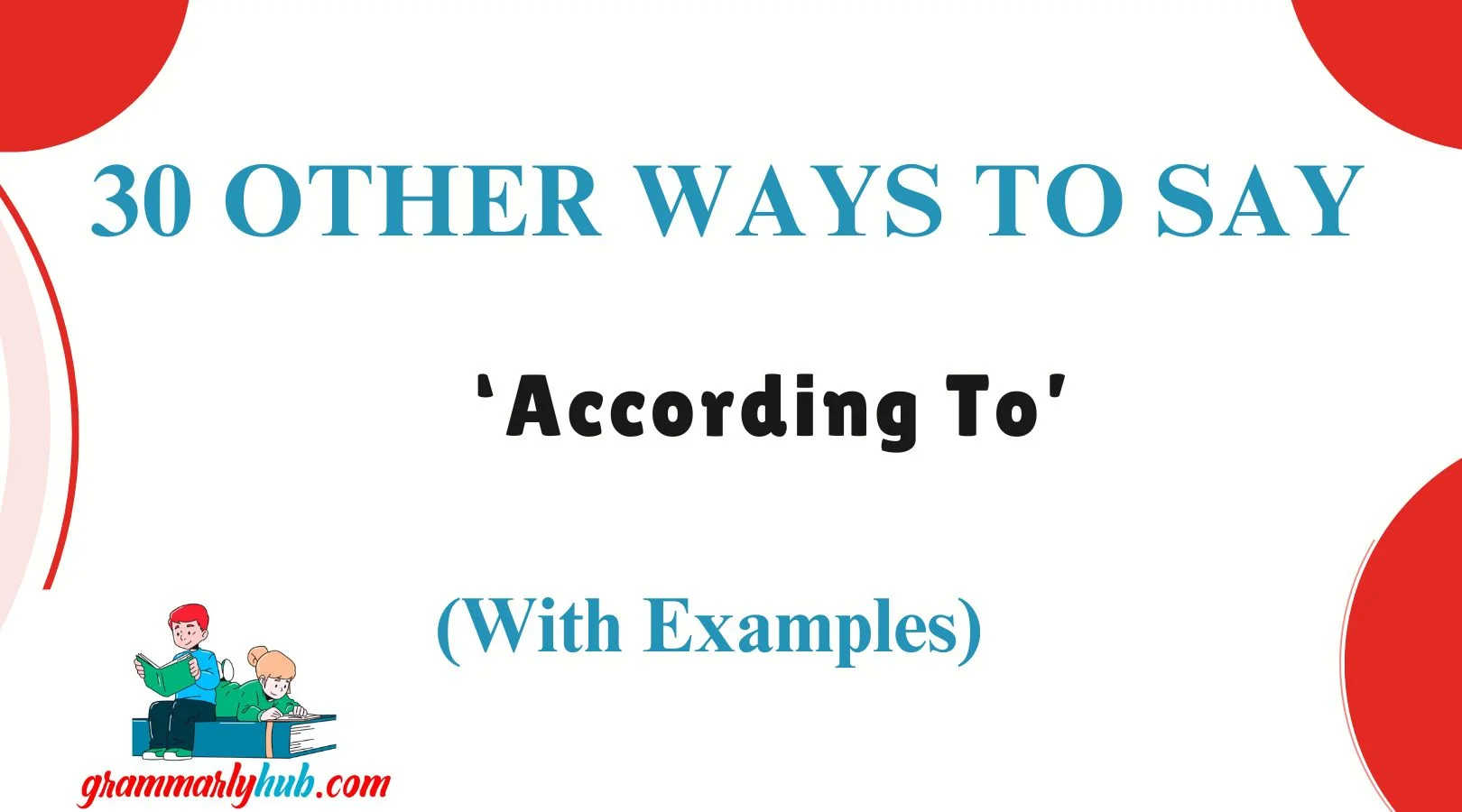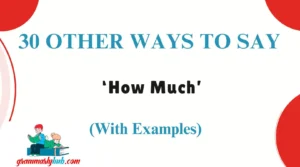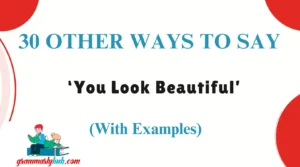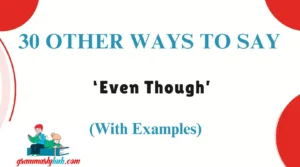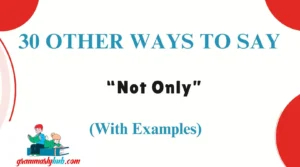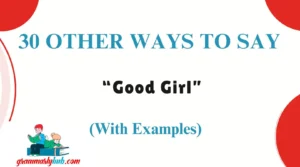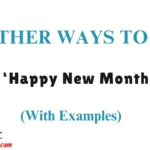Choosing the right words can make your message more thoughtful, respectful, and personal. When we say “according to”, we often want to show where our information or opinion is coming from—but sometimes, it can sound too formal or impersonal.
Whether you’re writing an email, speaking in a meeting, or sharing something online, using alternatives can help your words land with more warmth and human connection. This article will help you explore 30 original and empathetic alternatives to say “according to” that feel natural, professional, and caring—without sounding robotic or dry.
What Does “According To” Mean?
“According to” is used to reference someone else’s words, research, opinion, or authority. It signals that what follows comes from another source—not your own claim.This phrase helps establish credibility, clarify who said what, and separate your thoughts from external input. It’s essential in both formal writing and everyday conversation, especially when discussing facts, studies, or other perspectives.Generally neutral to formal, depending on context. It can sometimes feel stiff or overly academic in casual conversations.
When to Use “According To”
You should use “according to” when:
- Citing a source or study
- Attributing quotes or statements
- Clarifying origin of an idea or claim
- Stating opinions that aren’t your own
It’s common in academic writing, journalism, formal emails, and presentations.
Is It Professional/Polite to Say “According To”?
Yes, it’s absolutely professional and polite. However, in human-centered communication, especially when you’re trying to sound warm, soft, or relatable, it can feel a bit detached or impersonal. That’s where softer or more tailored alternatives can work better.
Pros and Cons of Saying “According To”
Pros:
- Clear and direct
- Recognized in formal writing
- Neutral and safe
Cons:
- Can feel cold or distant
- Sounds too textbook-like in friendly or emotional settings
- Lacks emotional connection or nuance
Synonyms For “According To”
- As stated by
- As reported by
- As mentioned in
- As shared by
- Based on
- As observed by
- As highlighted in
- As explained by
- As revealed by
- Per
- As detailed in
- As referenced by
- Drawing from
- By the words of
- In the words of
- Referring to
- As noted in
- As cited by
- From the perspective of
- In line with
- In reference to
- On the authority of
- From what I’ve read
- As disclosed in
- As found in
- In view of
- With reference to
- As conveyed by
- According to what was said by
- As put forth by
1. As stated by
Definition: Used to report exactly what someone said or wrote.
Explanation: This phrase adds clarity while sounding a bit more natural than “according to.” It’s appropriate in formal and informal conversations.
Example Scenario: “As stated by Dr. Patel, the symptoms may appear within 48 hours.”
Worst Use: Avoid using in emotional or sensitive conversations—it might still sound clinical.
Tone: Neutral to formal. Slightly softer than “according to.”
2. As reported by
Definition: Used when referring to something that has been documented or covered by news or other sources.
Explanation: This version adds a sense of credibility and journalism. It fits well when referencing articles or official updates.
Example Scenario: “As reported by The Times, inflation rates have surged again.”
Worst Use: In personal emails or messages—it can feel too stiff.
Tone: Authoritative, polished, and informative.
3. As mentioned in
Definition: Refers back to a specific statement made in a source.
Explanation: Great for referencing earlier parts of a document or things someone else has said.
Example Scenario: “As mentioned in our last meeting, we’ll launch next quarter.”
Worst Use: When no prior statement was actually made—it becomes confusing.
Tone: Casual to semi-formal, friendly.
4. As shared by
Definition: Implies a more personal or casual sharing of information.
Explanation: This has a gentle, inclusive tone, suitable for conversations, social media, or newsletters.
Example Scenario: “As shared by our HR manager, we have a wellness day next Friday.”
Worst Use: When citing research or legal sources—it sounds too informal.
Tone: Warm, personal, and conversational.
5. Based on
Definition: Used when your statement relies on previous information or analysis.
Explanation: More abstract than “according to,” often useful in analytics or planning discussions.
Example Scenario: “Based on recent data, sales are trending upwards.”
Worst Use: Avoid using it without context—it can seem vague.
Tone: Analytical, objective, neutral.
6. As observed by
Definition: Used when referencing someone’s direct observation or account.
Explanation: Adds a layer of firsthand credibility—good for science, research, or testimonials.
Example Scenario: “As observed by the technician, the error occurred during startup.”
Worst Use: In casual conversation—it might sound overly technical.
Tone: Professional, detail-oriented.
7. As highlighted in
Definition: Used when emphasizing something already noted in another source.
Explanation: Perfect for drawing attention to key takeaways or important points.
Example Scenario: “As highlighted in the survey, customer satisfaction has improved.”
Worst Use: Avoid in storytelling or informal conversation—it may break the flow.
Tone: Formal, emphatic, and structured.
8. As explained by
Definition: Shows that someone has provided reasoning or context.
Explanation: Adds a more supportive tone, making the information easier to digest.
Example Scenario: “As explained by the coach, consistency is more important than speed.”
Worst Use: Avoid when the explanation is obvious or unnecessary—it may seem patronizing.
Tone: Helpful, clarifying, and calm.
9. As revealed by
Definition: Used when disclosing something that was previously unknown.
Explanation: Adds a sense of discovery or uncovering, often seen in reports or exposés.
Example Scenario: “As revealed by the audit, there were discrepancies in the ledger.”
Worst Use: Too dramatic for casual mentions or minor points.
Tone: Dramatic, serious, investigative.
10. Per
Definition: A concise way to say “as per the information from…”
Explanation: Common in emails and internal communications—efficient, but very formal.
Example Scenario: “Per your request, the invoice has been updated.”
Worst Use: Too stiff for any personal or conversational tone.
Tone: Formal, brief, and bureaucratic.
11. As detailed in
Definition: Used when referring to information that was thoroughly described or outlined in another source.
Explanation: This phrase signals that the original source provided clear, in-depth details, which you’re now referencing. It’s perfect for technical, policy, or instructional content.
Example Scenario: “As detailed in the onboarding guide, new employees must complete training within 10 days.”
Worst Use: Avoid in casual chats or when the original source lacks detail—it can feel too formal or misleading.
Tone: Precise, informative, and professional.
12. As referenced by
Definition: Indicates that the information was pointed to or mentioned by someone else.
Explanation: This phrase is ideal when you’re acknowledging a mention or citation, especially in reports or formal discussions.
Example Scenario: “As referenced by the project manager, we’ll need to adjust timelines.”
Worst Use: In friendly or everyday speech—it can sound too procedural.
Tone: Formal, structured, and respectful.
13. Drawing from
Definition: Used to show that your statement is inspired or informed by a source or experience.
Explanation: This phrase gives a more organic and creative vibe, making it great for storytelling or writing that blends insight with observation.
Example Scenario: “Drawing from recent case studies, we’ve revised our approach to customer onboarding.”
Worst Use: In strict academic writing—it may sound too loose or indirect.
Tone: Reflective, insightful, and semi-formal.
14. By the words of
Definition: Cites someone directly, highlighting what they literally said.
Explanation: Best used when quoting someone’s exact words, especially in speeches, interviews, or testimonials.
Example Scenario: “By the words of the CEO, transparency will lead our next phase.”
Worst Use: When paraphrasing rather than quoting—it may feel unnatural.
Tone: Poetic, thoughtful, and sometimes dramatic.
15. In the words of
Definition: Similar to “by the words of,” but often used when introducing a quote or invoking someone’s phrasing with emotional resonance.
Explanation: This alternative helps add weight or emotion to a statement, ideal for public speaking or motivational contexts.
Example Scenario: “In the words of Maya Angelou, ‘People will never forget how you made them feel.’”
Worst Use: Avoid in analytical writing or data-driven discussions.
Tone: Emotional, inspiring, and reverent.
16. Referring to
Definition: Used to point the audience toward a source or prior information.
Explanation: More neutral than most alternatives, this phrase keeps things professional without sounding overly formal.
Example Scenario: “Referring to the Q1 results, we noticed a spike in engagement.”
Worst Use: Can feel vague without clarity—avoid if your source isn’t well defined.
Tone: Neutral, informative, and clear.
17. As noted in
Definition: Means that something was acknowledged or pointed out in a source.
Explanation: Works well in written communication and documentation where prior points were made.
Example Scenario: “As noted in the earlier section, quality control is a top priority.”
Worst Use: Overused in dry corporate writing—may seem uninspired without variation.
Tone: Professional, matter-of-fact, and documentary.
18. As cited by
Definition: Refers to a formal or academic citation of a source.
Explanation: Best used in research papers, journals, or documentation to show that a point is backed by a published authority.
Example Scenario: “As cited by Harvard Business Review, emotional intelligence improves team performance.”
Worst Use: Avoid in casual content—it’s too scholarly for general conversation.
Tone: Formal, academic, and evidence-based.
19. From the perspective of
Definition: Communicates that you’re presenting an idea through someone else’s viewpoint.
Explanation: Adds depth and empathy to a statement by highlighting subjective experience or opinion.
Example Scenario: “From the perspective of our clients, the new system feels more intuitive.”
Worst Use: In purely factual contexts—it may sound too opinion-focused.
Tone: Thoughtful, empathetic, and relational.
20. In line with
Definition: Shows agreement or consistency with something that’s been said or established.
Explanation: A great way to align your message with existing policies, strategies, or opinions.
Example Scenario: “In line with industry standards, we’re increasing data protection measures.”
Worst Use: In personal or emotional contexts—it feels cold or mechanical.
Tone: Aligned, strategic, and formal.
21. In reference to
Definition: Used to introduce or connect to an earlier discussion or external source.
Explanation: It’s a safe, formal way to establish context in emails, documents, or presentations.
Example Scenario: “In reference to our last meeting, here’s the updated proposal.”
Worst Use: Overuse can sound bureaucratic—avoid in warm or human-centered dialogue.
Tone: Polite, neutral, and official.
22. On the authority of
Definition: Used when the source is well-respected, often legal, governmental, or academic.
Explanation: Signals high credibility, often in policy, law, or formal reports.
Example Scenario: “On the authority of the FDA, the treatment was approved last month.”
Worst Use: Too heavy-handed in light conversations or informal writing.
Tone: Authoritative, official, and serious.
23. From what I’ve read
Definition: A casual way to indicate that your statement comes from personal reading or informal research.
Explanation: It’s great for blog posts, discussions, and personal reflection—feels more authentic and human.
Example Scenario: “From what I’ve read, practicing gratitude can improve mental well-being.”
Worst Use: In legal or scientific reports—it’s not verifiable or formal enough.
Tone: Personal, casual, and relatable.
24. As disclosed in
Definition: Means something has been formally revealed, especially in sensitive or official contexts.
Explanation: Useful in corporate communications, press releases, or policy documents.
Example Scenario: “As disclosed in the quarterly earnings report, revenue rose 8%.”
Worst Use: Too formal for general or social conversation.
Tone: Serious, professional, and structured.
25. As found in
Definition: Indicates that the information was discovered or located in a particular source.
Explanation: Good for referencing research, data, or studies in a non-academic way.
Example Scenario: “As found in recent market analysis, mobile usage is increasing.”
Worst Use: Avoid when the source is opinion-based—it can sound misleading.
Tone: Factual, neutral, and slightly technical.
26. In view of
Definition: Used to express that a statement or action is made considering certain facts or circumstances.
Explanation: This phrase frames your comment within the context of recent developments or knowledge, often in formal or analytical discussions.
Example Scenario: “In view of the new data, we’ve updated our marketing strategy.”
Worst Use: Avoid in emotional or personal messages—it can feel too cold or analytical.
Tone: Reasoned, formal, and thoughtful.
27. With reference to
Definition: Signals that you are about to discuss or respond to something previously mentioned.
Explanation: This phrase is especially common in emails, letters, and business communication, making transitions smooth and polite.
Example Scenario: “With reference to our last discussion, we are moving forward with the next phase.”
Worst Use: In friendly chats—it may come across as stiff or overly professional.
Tone: Polite, formal, and structured.
28. As conveyed by
Definition: Means that the information was communicated or expressed by someone else, often thoughtfully or intentionally.
Explanation: It’s great for paraphrasing emotional, persuasive, or influential communication.
Example Scenario: “As conveyed by the counselor, open communication builds stronger relationships.”
Worst Use: When quoting raw data or stats—it’s better suited to emotive or human statements.
Tone: Empathetic, respectful, and gentle.
29. According to what was said by
Definition: A longer form of “according to,” emphasizing that the information was verbally expressed by someone.
Explanation: This phrase works well in interviews, meetings, or retellings, where it’s important to show who said what.
Example Scenario: “According to what was said by the team lead, we should submit feedback by Friday.”
Worst Use: In academic or formal writing—it’s too wordy and conversational.
Tone: Casual, narrative, and personal.
30. As put forth by
Definition: Used when someone has proposed or presented an idea or argument formally.
Explanation: Best used in discussions involving plans, theories, or proposals, especially in professional or academic contexts.
Example Scenario: “As put forth by the architect, the redesign maximizes both light and space.”
Worst Use: Avoid in casual conversations—it can sound stiff or overly formal.
Tone: Assertive, professional, and articulate.
Conclusion
Finding the right words to replace “according to” can transform your communication from simply functional to deeply thoughtful, clear, and intentional. Whether you’re drafting a research paper, crafting an email, or speaking from the heart, the 30 alternatives listed above help you adapt your tone to suit every situation—from academic to conversational, from formal to empathetic.
Each synonym offers its own flavor:
- Some are more academic (“as cited by,” “on the authority of”)
- Others are emotive (“in the words of,” “as conveyed by”)
- A few work great in casual or narrative contexts (“from what I’ve read,” “according to what was said by”)
The key to choosing the right alternative lies in your intent, audience, and context. Use this guide as your go-to reference for when you want to speak with more care, clarity, and connection.
Your words matter—how you say something is just as important as what you say.
FAQs:
1. Why should I avoid using “According To” all the time?
Using “According To” repeatedly can make your writing feel repetitive and predictable. By incorporating alternative phrases, you can add variety, depth, and tone to your communication, making your message feel more personal and thoughtful. It helps in maintaining reader interest and enhancing the overall flow of your content.
2. Can I use these alternatives in casual conversations?
Absolutely! Many of the alternatives—like “from what I’ve read” or “as put forth by“—are perfectly suited for casual conversations and informal writing. The key is to choose the right phrasing depending on the tone and context of the discussion. Some phrases, like “as referenced by” or “in view of,” are more suited for professional or formal settings.
3. When is it appropriate to use formal alternatives like “as cited by” or “on the authority of”?
Formal alternatives like “as cited by” or “on the authority of” are best used in academic, research-based, or professional settings. They are ideal when you are referencing authoritative sources or need to ensure that your statements are backed by credible, recognized entities.
4. How can I make my communication more empathetic using these alternatives?
Empathy is about being relatable and understanding. Phrases like “as conveyed by” or “in the words of” offer a more personal touch by framing the information in a way that feels emotionally connected. It shows that you are actively listening and engaging with the source, which helps you build rapport with your audience.
5. Can these alternatives be used in both writing and speaking?
Yes! Many of the alternatives listed in the article can be used in both spoken and written communication. For instance, “in the words of” works well in speeches, presentations, or casual conversations, while “as noted in” or “drawing from” fits both professional documents and public speaking scenarios.

Welcome to GrammarlyHub, your trusted resource for writing clarity, grammar insights, and language tools. Founded by Mia Rose, a passionate writer and language enthusiast, GrammarlyHub is dedicated to helping students, professionals, and creatives write with confidence and precision.
